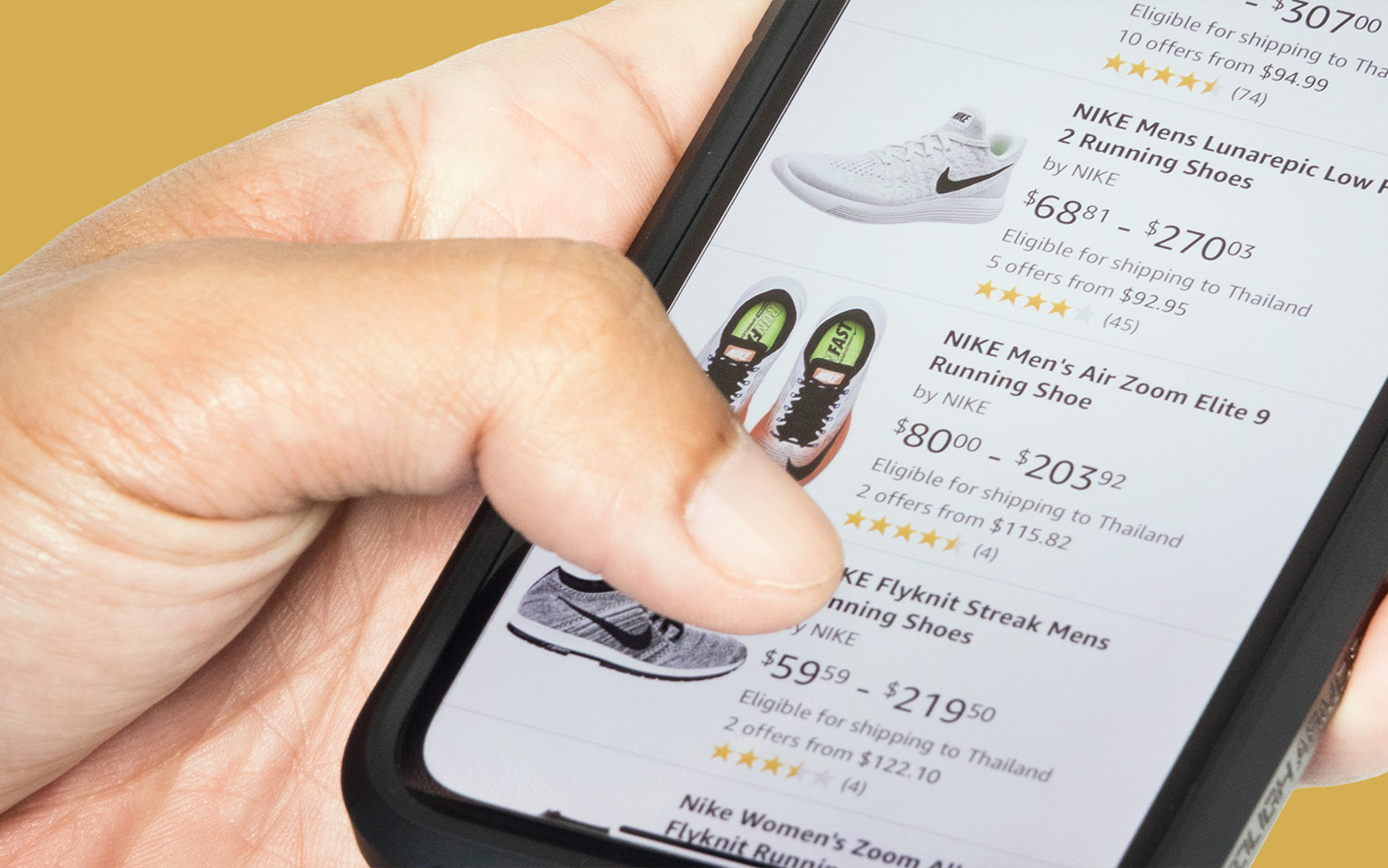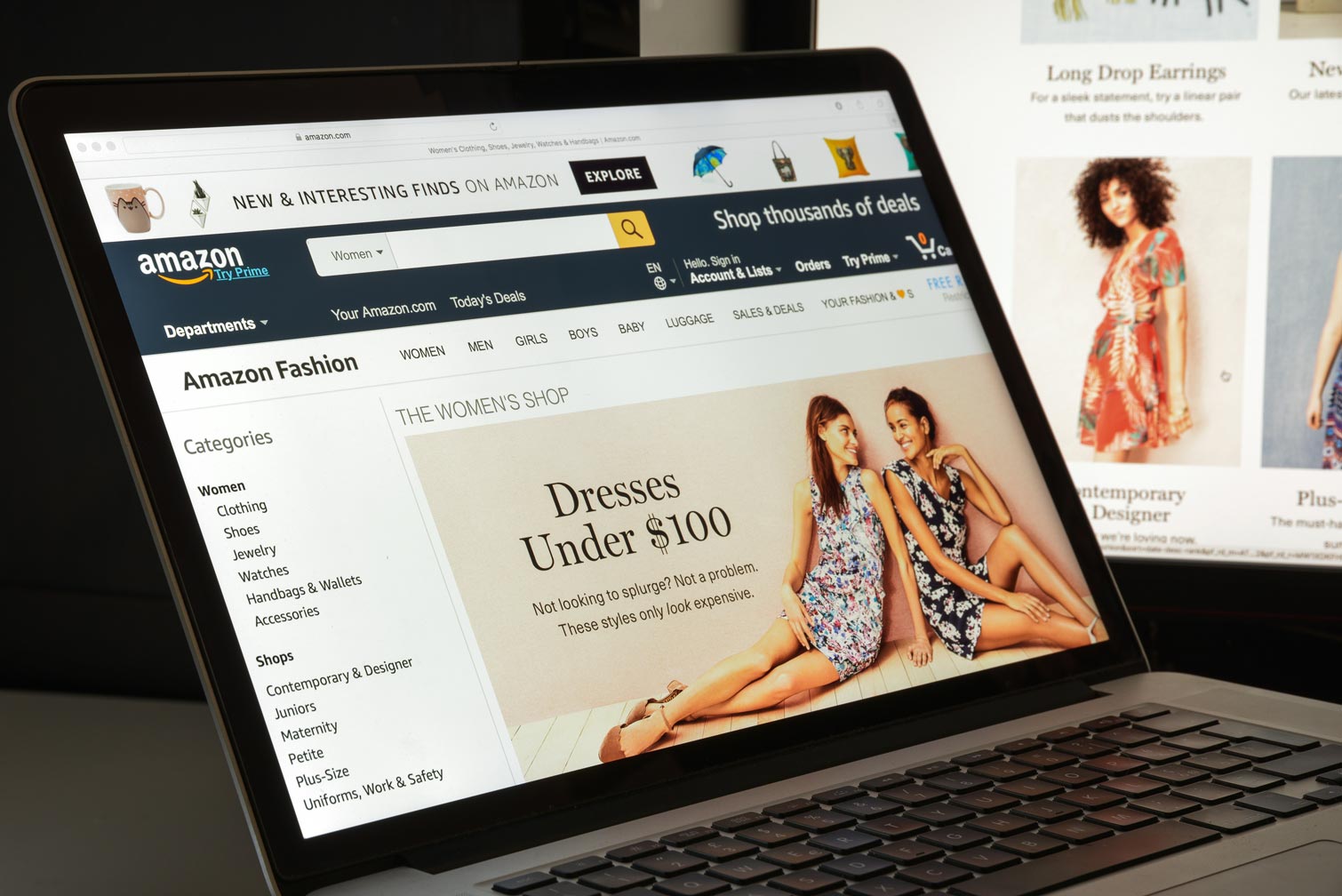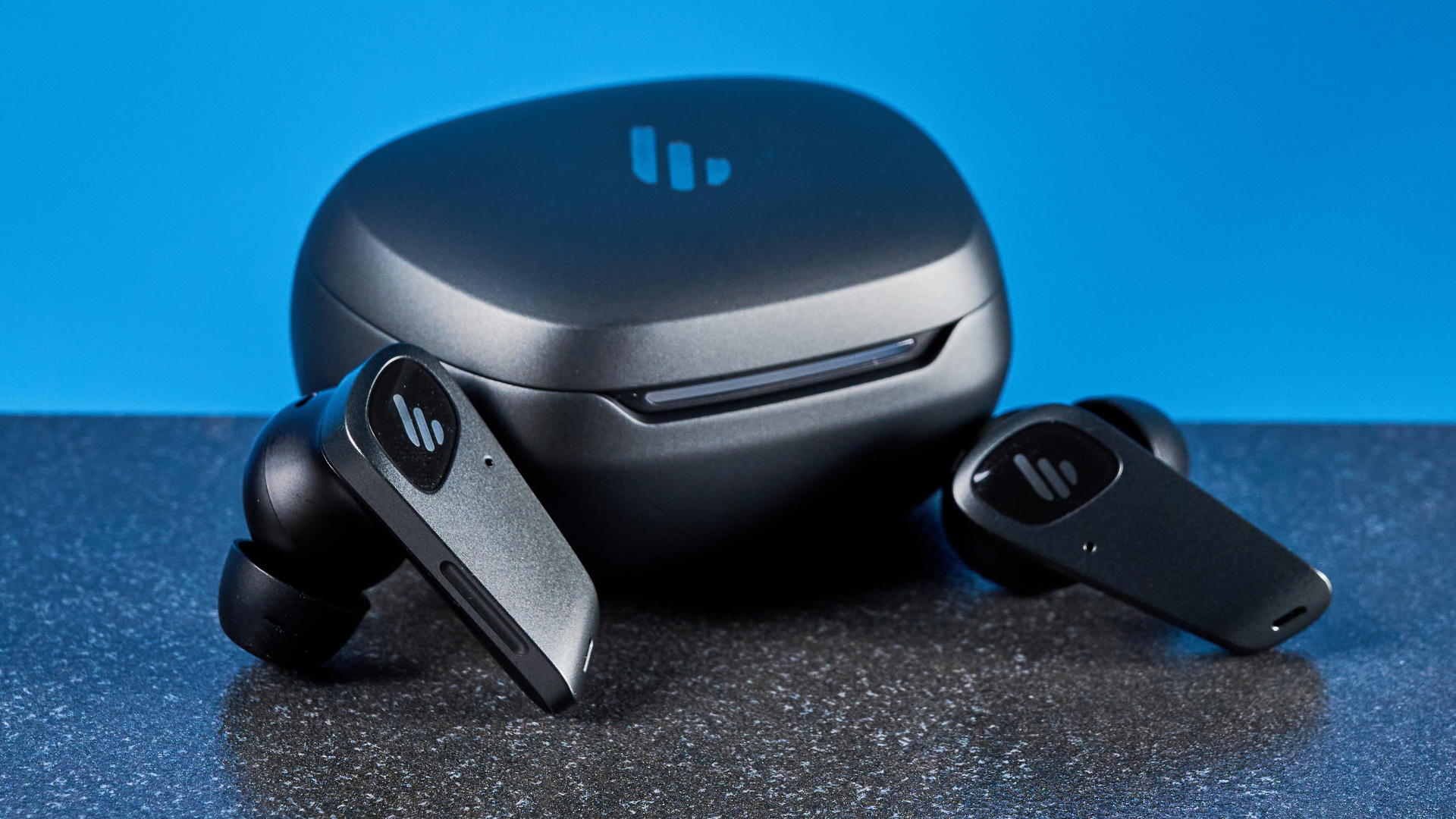Here's Why You Shouldn't Trust Amazon Reviews
Amazon's product pages are infested with hundreds and sometimes thousands of deceptive reviews, and the schemes are getting so sophisticated that the retailer can't keep up.
Go shopping on Amazon for anything — laptops, diapers, door locks, tires — and you'll likely study a product's star rating, as well as the number of reviews it has, when choosing the one to buy. Even better if it has the "Amazon's Choice" seal of approval, which, according to Amazon, is reserved for "highly rated, well-priced products available to ship immediately."

But can you trust these ratings, and this badge, at face value? No.
Seemingly since the first book went up on this massive e-tailer, companies have been trying to game Amazon's rating system to ensure that more people buy their products.
The more positive reviews a product gets, the higher its visibility on Amazon's search pages. Like Google page rankings, being in the first 10 listings makes it much more likely that a shopper will click on the product and buy it. So, companies have devised a number of strategies to goose the number of positive reviews.
"There's a lot of tricks that sellers can do that aren't breaking the rules, but are still misleading,” said Tommy Noonan, the founder of ReviewMeta.com, a site that analyzes Amazon reviews for authenticity.
For example, a seller might send an email to a customer about a product they purchased, offering to give them a discount if they give the product a high rating. "It's encouraging people to review, but only those who are positive ones," Noonan said.
Gaming the system
Early on, companies would give free or highly discounted products to consumers, who would then write glowing reviews. Even though Amazon banned this practice in 2016, product manufacturers haven't stopped.
One brazen method is to simply pay people to write reviews; Amazon has sued a number of sites, such as BuyAmazonReviews.com, in an effort to crack down on this method.
Another way that Amazon tries to improve the authenticity of its reviews is through verified purchases; if you review a product that you purchased through Amazon, a "Verified Purchase" will appear with your review.
The Amazon Review Club group on Facebook has more than 45,000 members. And because these "reviewers" have purchased the product, they show up as Verified.
Here, too, though, companies have found a way to artificially inflate their products' ratings: Using gift cards, they will anonymously send products for free to random individuals, in the hope that those people will then write reviews on Amazon. Because Amazon's system thinks that the individual "purchased" the item, the review will show up as a Verified Purchase.
Go on Facebook and search for Amazon Review, and you'll find dozens of groups with companies asking people to buy and review their products; in exchange, they promise to refund the full amount of the product. Some even offer a commission. The USA amazon reviewers club, for instance, has nearly 5,000 members, with individuals with such catchy names as Bob Dylan asking for reviews of tablecloth clips. Another "Amazon Review Club" group has more than 45,000 members. And, because these "reviewers" have purchased the product, they show up as Verified.
MORE: 100+ Tech Gift Ideas for Men, Women and Kids
"Consumers do rely upon reviews for purchasing products and services, and it matters a lot to them whether those reviews are reliable," said Michael Ostheimer, an attorney in the Division of Advertising Practices in the Federal Trade Commission. “With respect to fake reviews, we have not brought cases, but it is on our radar, and is something that we will continue to investigate."
For its part, Amazon says it doesn't take misleading user reviews lightly. "We know that millions of customers make informed buying decisions every day using Customer Reviews," a spokesperson said. "We take this responsibility very seriously and defend the integrity of reviews by taking aggressive action to protect customers from dishonest parties who are abusing the reviews system."
Amazon says that customers can report suspicious reviews 24 hours a day, seven days a week and that it investigates each claim. The company will also suspend, ban or "pursue legal action against these bad actors as well as suppress all known inauthentic reviews."
Update (Sept. 2018): Even more recently, a Wall Street Journal story reported that Amazon was investigating company employees who were accepting bribes to delete negative reviews and provide competitive data to some vendors.
But the problem isn't going away.
What can you do?
So how can you be sure that the reviews you're looking at are legitimate and unbiased? The fact is, you can't. But there are ways to be better informed.
Two services, Fakespot and ReviewMeta, have developed algorithms for detecting deceptive practices. ReviewMeta, for example, takes a look at a number of factors, such as the number of reviews a user has posted; if a significant percentage of reviews for a product were posted on a disproportionately small number of days' phrase repetition; and more.
Fakespot also looks at traits such as word repetition and reviewer patterns, and gives a grade based on how many reviews it thinks are of high quality. Saoud Khalifah started the site in 2014 after he bought something on Amazon that was highly rated, but turned out to be junk.

"Something I ordered didn't match at all with what I ordered," Khalifah said. "I took a look at the reviews and the profiles, and could figure out they were biased and there was deception involved."
How did he get fooled? By not digging any deeper than just looking at the ratings. "[The sellers] know that people do the one-click checkouts,” Khalifah said. "It's the same trap I fell into when I started using Amazon."
Using AI and machine learning, Khalifah developed an algorithm that, among other things, detects if a person is writing the same review from multiple accounts and if the reviewer has seen that company or product before. It also takes into account all other reviews written about the company, product and by the person writing the review.
Recently, devious companies have resorted to yet another tactic, called "review hijacking." Here, they will find a defunct, but highly rated product, and change everything on the page — the product name, picture, description, etc. — but leave the reviews intact. So, at first glance, a baby monitor might appear to have a rating of 4.5 stars — which is as far as most consumers will look — but if you dig into the reviews, they'll be for something completely different, like bicycle tires.
The problem with algorithms
Noonan acknowledges that his ReviewMeta service isn't perfect, and cautions against labeling a review as "fake." "There's no guarantee that anything is accurate. It's a best guess, and the same goes with Fakespot. Nobody has a magic wand were you can point to a single review and say that's fake or that's not."
For example, there are often legitimate reasons why a lot of customers might review something in a short time span, which can trick his system. "You see that a lot with seasonal products — huge spikes of reviews just after the season, or when there's a lightning deal. You see that a lot with books, too," he said.
Many of Amazon's products fall subject to this. The second-generation Amazon Echo has an average rating of 4.5 stars, and more than 29,000 reviews. Fakespot gives it an F: more than 77 percent low-quality reviews. ReviewMeta also gives it a Fail. One of the reasons? 54 percent of the reviews were created in just over 34 days; however, these are all in early January and February — right after the holidays, when the Echo was a much-gifted item.
"Amazon Basics battery packs have thousands of reviews. Why would anyone review batteries? Amazon knows in order to sell more products, they need better ratings." — Saoud Khalifah, founder, Fakespot
And, just because a review may be inauthentic doesn't mean the product is bad. Take, for example, the aforementioned Echo: Tom's Guide, which independently reviews products, named it the best smart speaker. It also received high marks from other independent tech review sites such as CNET, PCMag and The Verge.
MORE: Buying a Used iPhone? Here's How to Avoid a Rip-Off
Also, a new company with a new but otherwise good product may try to "seed" some reviews to get it to rank higher in Amazon, and noticed by more consumers. While this will raise flags with Fakespot and ReviewMeta, it's a reflection of the newness of the product, and not how good or bad it is. "It's not a judgment of the quality of the product; we are only testing the reviews," Khalifah said.
Amazon takes (some) action
With millions of reviews for hundreds of thousands of products, the task can seem Sisyphean. Like Fakespot and ReviewMeta, Amazon also uses machine learning to weed out the bad from the good.
"When we identify companies who have abused the reviews system, we suspend or ban them from Amazon," the Amazon spokesperson said. "Abusing reviews puts the company's business at risk. In addition to advance detection, we've filed lawsuits against more than 1,000 defendants for reviews abuse."
However, even reviews from Amazon's own programs can be called into question. Launched in 2007, Amazon Vine is an invite-only program where select individuals receive free products, and are expected to review them. While there is a vetting process — participants are selected "based on their reviewer rank, which is a reflection of the quality and helpfulness of their reviews as judged by other Amazon customers," according to Amazon — both ReviewMeta and Fakespot have determined that Vine reviews are generally more positive than reviews as a whole, and will take that into account.
"In addition to advance detection, we've filed lawsuits against more than 1,000 defendants for reviews abuse." — Amazon spokesperson
"If you look at Amazon Basics battery packs, they have thousands of reviews," Khalifah said. "Why would anyone review batteries? They either work or they don't. But they're all part of the Vine review program. Amazon knows in order to sell more products, they need better ratings and better reviews."
In 2016, ReviewMeta did an analysis of Vine reviews versus regular and incentivized reviews, and found that while Vine reviews were less glowing than incentivized reviews, there was still some inherent bias. Noonan said that its findings should still be accurate.
Fakespot gives this 48-pack of AA batteries a C grade — 21 percent of its 22,196 reviews are low quality. ReviewMeta also gave it a pass, but both services noted that Amazon had deleted a lot of reviews for the product. But does that mean the reviews that are left are the legitimate ones? It's hard to say.
Bottom line
So what can consumers do to find out if the reviews they're reading are an accurate representation of the product's worth? For one, look for sites that are transparent about their editorial practices.
"There's no golden answer as to how a consumer can know if something is a fake review," said the FTC's Ostheimer. “A more fulsome, detailed review is more likely to be real, but you can't assume that's the case. With some products, one can look them up on multiple review sites, or sites that are in the business of reviewing products."
The answer given by everyone is to do as much digging as possible, and not rely on just one site as the ultimate answer.
"My goal is to help provide more information," Noonan says. "Blindly accepting [ReviewMeta's] analysis is just as bad as taking the average product rating on Amazon. Staying critical of everything you read is critical."
"Research as much as possible," Khalifah said. "If you're buying something expensive, look at reviews, videos, vlog posts. You have to put all those variables together."
Credit: Shutterstock
Sign up to get the BEST of Tom's Guide direct to your inbox.
Get instant access to breaking news, the hottest reviews, great deals and helpful tips.

Michael A. Prospero is the U.S. Editor-in-Chief for Tom’s Guide. He oversees all evergreen content and oversees the Homes, Smart Home, and Fitness/Wearables categories for the site. In his spare time, he also tests out the latest drones, electric scooters, and smart home gadgets, such as video doorbells. Before his tenure at Tom's Guide, he was the Reviews Editor for Laptop Magazine, a reporter at Fast Company, the Times of Trenton, and, many eons back, an intern at George magazine. He received his undergraduate degree from Boston College, where he worked on the campus newspaper The Heights, and then attended the Columbia University school of Journalism. When he’s not testing out the latest running watch, electric scooter, or skiing or training for a marathon, he’s probably using the latest sous vide machine, smoker, or pizza oven, to the delight — or chagrin — of his family.
-
jsmithepa Notice this a while back.Reply
On top of that, Amazon has a bad habit of grouping similar products into one giant review. That's not accurate at all. Used to use Amazon for reviews but no longer. I dive straight into the bad ones and read if complaints have any validity.
Now that Bezos has more$$$ than Gates, not sure if they gonna change. -
simonstroud Sorry, but this is nonsense, and basically sour grapes from someone that's not part of the Vine programme.Reply
I review items as part of Amazon Vine, and my reviews are 100% honest, and I write them as if I paid the current RRP. Amazon are 100% legit too. I have posted plenty of 1 and 2 star reviews for products than fail to live up to expecatations, and amazon always post these, and they appear with the same weighting as 5 star reviews.
